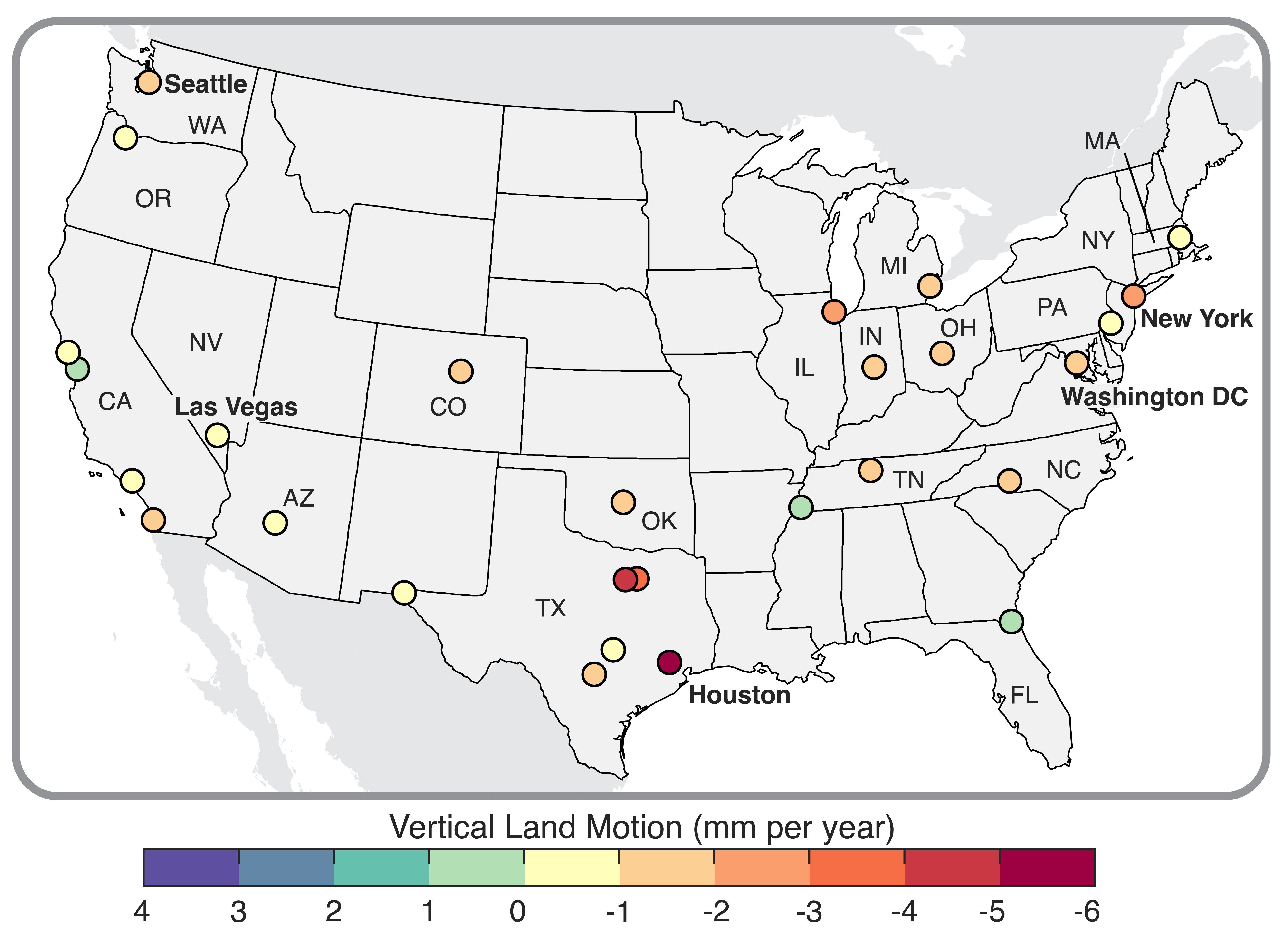Dozens of the busiest cities in the US are sinking into the ground. A bunch of them are subsiding by a few millimeters every single year, with certain localized spots sinking to a degree of several centimeters.
The culprit is water – or rather, the removal of it. Dense urban areas, packed full of humans, industry, and infrastructure, pump vast quantities of water from underground stores of water to meet residential, industrial, and agricultural needs. Over time, this extraction depletes the water that helps support the ground, causing the land above to sink.
While it’s often seen as a coastal problem due to the risks of sea level rises, it’s an issue impacting inland urban areas too.
A recent study led by scientists at Columbia University and Virginia Tech has used geophysical satellite data to make high-resolution maps of subsidence rates for the 28 most populous US cities.
Every single one of them was sinking to some extent. In at least 25 of the 28 cities, they found that two-thirds or more of the land was sinking.
The worst-affected was Houston in Texas, with more than 40 percent of its land sinking more than 5 millimeters (about 1/5 inch) per year. Approximately 12 percent of the city is sinking at twice that rate, and in some localized areas, the ground is dropping by as much as 5 centimeters (2 inches) annually.

Map showing the average rate of vertical land motion for 28 US cities as evaluated in this study.
Image credit: adapted from Ohenhen et al., Nature Cities, 2025
Two other major Texas cities, Fort Worth and Dallas, were also found to be significantly impacted. More rapidly subsiding hotspots include areas near New York’s LaGuardia Airport, as well as parts of Las Vegas, Washington DC, and San Francisco.
Several other cities are also experiencing widespread subsidence, with up to 98 percent of their land area affected. These include Chicago, Dallas, Columbus, Detroit, Fort Worth, Denver, New York, Indianapolis, Houston, and Charlotte.
The sinking of land is likely to have a real impact on buildings, roads, rail lines, and other infrastructure. The cities facing the greatest risk include San Antonio, where researchers estimate that 1 in every 45 buildings is highly vulnerable; Austin, where the figure is 1 in 71; Fort Worth, 1 in 143; and Memphis, 1 in 167.
“As cities continue to grow, we will see more cities expand into subsiding regions. Over time, this subsidence can produce stresses on infrastructure that will go past their safety limit,” Leonard Ohenhen, lead study author and postdoctoral researcher at Lamont-Doherty Earth Observatory, said in a statement.
This isn’t confined to the US. One of the fastest sinking cities in the world is fastest is Mexico City. Research has shown that the Mexican capital has been consistently sinking at a rate of 50 centimeters (19.69 inches) per year since 1950. This isn’t the result of groundwater pumping, but rather the compaction of the soft, clay-rich bed on which the city was built.
Jakarta, the capital of Indonesia, is another striking example. As a low-lying coastal city, it faces a particularly urgent threat: if current trends continue, up to 25 percent of its land could be underwater by 2050. The situation is so critical that Indonesia is in the process of relocating its capital to a newly planned city called Nusantara.
The study is published in the journal Nature Cities.
Source Link: Why The 28 Biggest Cities In The US Are Sinking Into The Ground